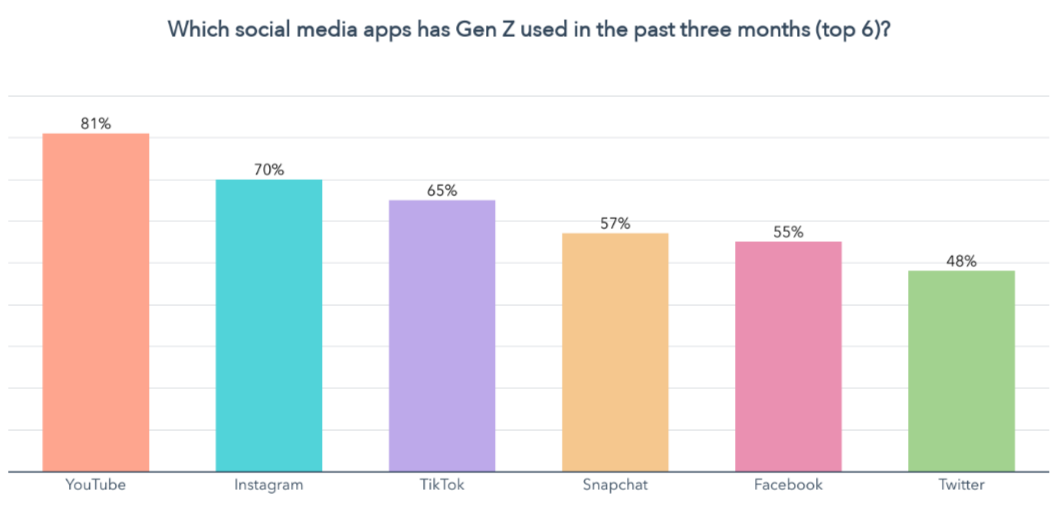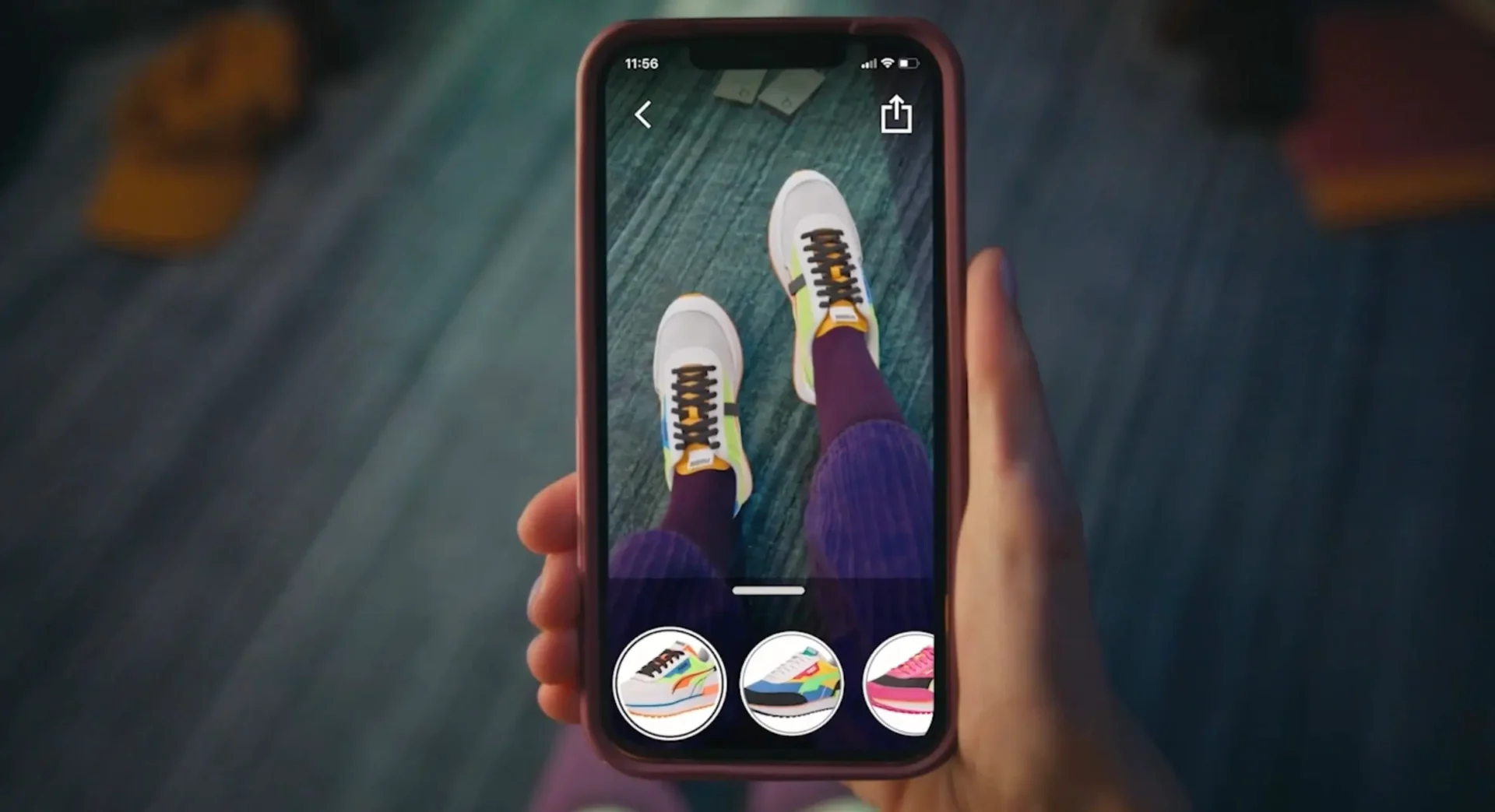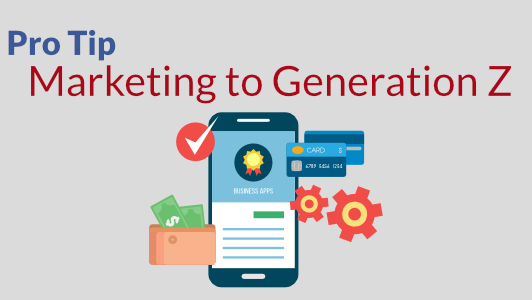Why do we need to make sure we’re marketing to Gen Z in the right way? Traditional marketing campaigns often struggle to capture their attention as they are quite personalized and creative. According to Business Insider, they are one of the most powerful consumer forces in the market, accounting for 40% of consumers worldwide. Oxford Economics also predicts that they will have $3.2 trillion in disposable income and $3 trillion in consumption capacity by 2030. Brands and marketers who want to take advantage of their vast spending power have to reach into their minds. Here are the top 10 digital strategies for how to market to Gen Z in 2022.
Table of Contents
- 5 Statistics on Gen Z Marketing Trends & Buying Behaviors 2022
- 10 Best Tips for Marketing to Gen Z – Drive Higher Sales
- 1. Adopt the 8-Second Rule in Video Marketing
- 2. Focus on Social Media & Influencer Marketing
- 3. Create a Seamless Omni-channel Shopping Experience
- 4. Sharing Behind-the-Scenes with Consumers
- 5. Deliver an Immersive Gamification Experience
- 6. Share AR Storytelling with Consumers
- 7. Integrate AR Try-on Experience
- 8. Create Communities to Enhance Interactivity
- 9. Expand the Beliefs and Values of Your Brand
- 10. Change Your Language to Build Trust with Gen Z
- 4 Key Points on How to Market to Gen Z
5 Statistics on Gen Z Marketing Trends & Buying Behaviors 2022
Gen Z are digital pioneers who usually boldly seek out the latest trends in the future. To attract more of them, you need to first know their purchasing habits and behaviors as they see the world in a different way than their predecessors. Before we break down digital marketing strategies, let’s check out statistics on Gen Z’s marketing trends and buying behaviors in 2022.
- 97% of Gen Z Research Shopping Options on Social Media
97% of Gen Z say that social media is their preferred method of researching shopping options, and 93% of them spend about 4 hours and 20 minutes a day on social media. All brands should actively adopt digital advertising on Facebook, Twitter, LinkedIn, TikTok, and more. You might also be wondering which platforms they’re using the most, see the image below.

- 61% of Gen Z Prefer Short Videos of Less than One Minute
Video marketing strategy is a top priority for brands due to Gen Z’s shorter attention spans. 71% of them will watch 23 hours of video content per week on platforms such as YouTube and 61% prefer short videos of less than one minute. Also, note that 70% of them think video ads are disruptive, so digital AR ads will be more appealing.
- 88% of Gen Z Enjoy Omni-channel Shopping Experience
Despite having a large online shopping base, 98% of Gen Z indicates they would also shop in physical stores, and 88% says they preferred omni-channel shopping.
- 60% of Gen Z won’t Wait for Slow Loading
60% of Gen Z will not wait for slow loading, implying that your website performance has to be optimized. Brands also need to pay special attention to traffic and customer behavior on mobile devices, where most sales are likely to come from.
- 73% of Gen Z will Spend 10% More on Sustainable Products
According to First Insight, 73% of Gen Z are willing to pay 10% more for sustainable products. They value personalized products and are often attracted to brands that share their views on political issues.
10 Best Tips for Marketing to Gen Z – Drive Higher Sales
When we know Gen Z’s consumption behaviors and data, how can we quickly reach more potential consumers from the competition? Here are 10 best tips for marketing to Gen Z vs Millennials, helping you get better engagement and sales in 2022.

1. Adopt the 8-Second Rule in Video Marketing
Short videos using layers, visuals and music have proven to be marketing gold for brands. Please note that the average attention span of Gen Z is just eight seconds. It’s easier to build brand awareness if a business can interact with them within 8 seconds.
Emotions play a significant role in Gen Z’s purchasing decisions. The way you make them feel, such as shock, comfort, creativity, etc., determines their buying confidence. Therefore, we recommend that brands take a closer look at the non-verbal elements of video marketing, such as your visuals, images, colors, and sounds.
Remember to focus on the visuals before thinking about the script, tagline, or voiceover. Brands can create interesting and interactive videos by using bright colors, movement, fade in or fade out effects, close-up, smiling face, various filters, especially TikTok AR filters, Instagram AR scenarios, and more. In short, adopt the 8-second rule and keep your videos short, innovative, and sweet to reach more followers and potential consumers.
2. Focus on Social Media & Influencer Marketing
From the first part of the consumer behavior data, we know that the most common social media platforms used by Gen Z include Facebook, Instagram, TikTok, YouTube, etc. Brands need to focus more on personalized experiences, such as latest augmented reality future trends, gamification scenarios, online communities, and more.
Social media is an integral part of every shopping stage, from discovering new products to adding wish lists, sharing gift ideas and purchasing products. Many brands have built immersive AR try-on experiences on Facebook, Instagram, and Tik Tok, where consumers are guided to discover more details, try them on virtually, and buy directly online. This can significantly increase the brand’s private domain traffic, customer engagement rate and sales growth.
Furthermore, influencers are a trustworthy source of information for these younger consumer groups. Because they see influencers as ordinary people like themselves, their content is far more approachable than that of celebrities.

3. Create a Seamless Omni-channel Shopping Experience
An omni-channel solution will be the most effective way to improve customer experience because it allows you to cater to potential viewers from each channel and convert them into paying customers. Omni-channel typically refers to e-commerce and physical stores, but it also includes mobile websites, apps, social media channels, messaging and SMS, email marketing campaigns, and other services. In this way, consumers can experience outstanding services conveniently where they choose to connect from.
With Pomellato’s omni-channel AR jewelry try-on, consumers can head to real boutiques and virtually try them on without waiting in line. If an item they like isn’t available in the right size or color, they can pull out their phone to see if it’s available online, try it on online via AR, and purchase it from there. This has assisted the brand in reaching more consumers and increasing sales.
4. Sharing Behind-the-Scenes with Consumers
Sharing behind-the-scenes content is a popular way for companies to connect with Gen Z and build brand trust. Authenticity is everything for Gen Z, so sharing package orders, workspace tours, and team meetings will work well. Serendipity calls out to loyal customers using a package order that not only gives viewers an insight into how the business works, but also includes social proof that the product is worth buying.
Another advantage of creating behind-the-scenes content is its simplicity. Without having to hire a production team or go through fancy setups, videos with a more laid-back approach are highly favored by Gen Z and humanize your brand.
5. Deliver an Immersive Gamification Experience
The closure of real boutiques and the cancellation of fashion weeks have turned off once-enthusiastic shoppers in the fashion industry. Gamification is increasingly associated with luxury goods in this context. It has been lauded for democratizing the fashion industry and providing an escape from daily life, allowing Generation Z to take on new and powerful characters. Through this gamified tips for marketing to Gen Z, Brands can build communities and gather consumer data to inform production, inventory and sales.
The Honor of Kings Burberry Skin allows the player’s avatar skin model to wear Burberry’s iconic check print on appropriately themed garments. This immersive experience not only creates positive brand awareness for Burberry, but also encourages players to match their in-game characters to their real-life selves.

6. Share AR Storytelling with Consumers
Because Gen Z is inquisitive and entrepreneurial, they are especially eager to hear the stories behind brands, which means that being open to your brand can lead to better brand loyalty. With WebAR, the visualization of product packaging can be further extended to the real world, creating amazing visual experiences that appeal to a large cohort of Gen Z. All kinds of promotions can be digitized into immersive scenarios that directly touch consumers’ emotions and motivate their impulse buying decisions.
Martell collaborated with fashion designer Angel Chen to create a limited edition AR packaging collection. Users can experience Martell’s first shipment to China in 1858 in real-time by scanning the box or bottle. It not only provides consumers with a differentiated experience, but also enables them to understand the story behind the brand imperceptibly and gradually improve brand awareness.
7. Integrate AR Try-on Experience
It’s difficult for retailers to stay ahead of the curve in the digital age if they don’t interact with their customers. Gen Z frequently views shopping as an experience rather than a transaction. They place a premium on innovation, interaction, communication, interest, and clarity, which is where 3D and AR technologies come into play. According to the study, 30% of Gen Z said the augmented reality shopping experience made them more likely to buy the same brand again. More and more brands are entering the growing AR market to attract new customers and improve sales conversion rate, such as Gucci, Dior, Nike, Salvatore Ferragamo, etc.

8. Create Communities to Enhance Interactivity
Especially when it comes to social media marketing, don’t forget that communication goes both ways. Gen Z expects to interact more than previous generations. Research also shows that they will prefer community-based platforms like Discord and Twitch. We recommend that you consider interactive options, such as polls, quizzes, and Q&A sessions. You can ask for feedback and monitor the comments section for opportunities to start a conversation with them.
You can also build communities through influencer marketing, which can help your users see themselves and feel a sense of belonging in your brand and user-generated content.
9. Expand the Beliefs and Values of Your Brand
Brands Get Real reports that Gen Z consumers have high expectations for brands’ stances on social issues. They are three times more likely than other generations to believe that the purpose of a brand is to serve the community and society. From advocating for diversity to raising awareness of social issues and beyond, brands are increasingly wearing their beliefs and values on their sleeves.
The bold stance taken by brands seems to be tied to Gen Z’s desire to be heard and express their beliefs. Of course, brands should always be mindful of how they express their positions on social issues and do so in an appropriate manner.
10. Change Your Language to Build Trust with Gen Z
Although the brand shouldn’t try to use all the slang words their kids use to act as parents do, you can tune the language you use in your marketing to resonate with Gen Z characters.
For example, Gen Z don’t necessarily use checking accounts anymore because they’re mostly used to debit and credit cards and contactless payments. Instead, you need to focus on the language of mobile payments. Also, you can use phrases like “on-demand orders” and “tap to pay”.
4 Key Points on How to Market to Gen Z
Gen Z represents a large segment of today’s consumers. If they are in your target market and you want them to buy your product or service, we recommend that you listen to them. Here are 4 key points on how to market to Gen Z.

- Trust. If brands want to appeal to more Gen Z, they need to start building relationships based on trust, such as speaking Gen Z’s language and understanding their values.
- Inclusion and relevance. Brands need to focus on more inclusive advertising and work with people who belong to Gen Z, whether they are outside influencers or company employees.
- In-person connection. Despite being technologically savvy and immersed in the online world, Gen Z still values in-person communication. Brands can deliver a hybrid experience through cross-channel marketing that puts customers first.
- Never underestimate the power of a good deal. Gen Z knows how to find good discounts and doesn’t like retail prices, so brands need to tailor their sales strategies accordingly.
Bottom Line
Generation Z is the next big opportunity for businesses. As more of Gen Z enters the workforce, their spending power will continue to grow. By taking the time to learn about their preferences and these 10 tips for marketing to Gen Z, brands will build valuable relationships that benefit all parties involved.


